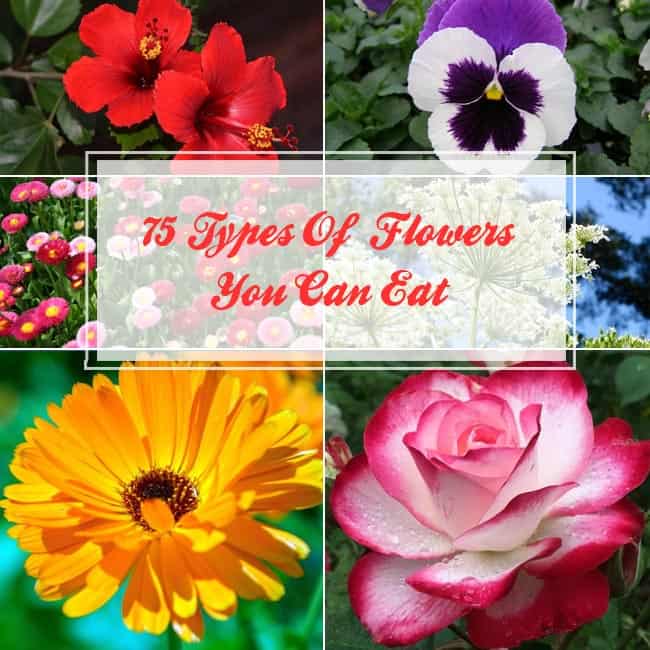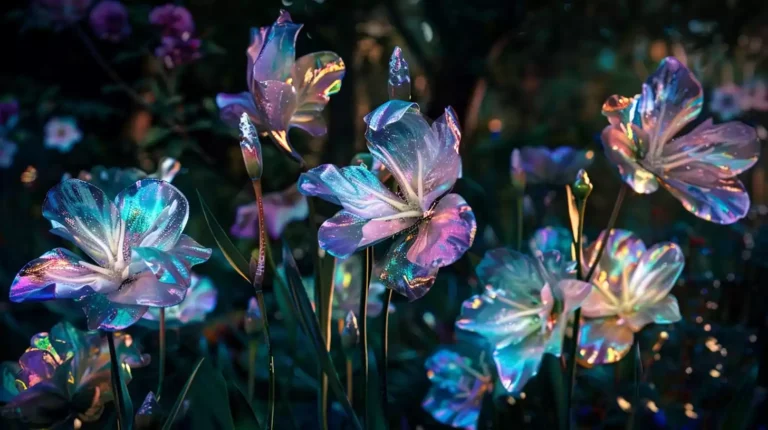The Floral Fantasies You Need to Know: Top 7 Mythical Flowers
I really like looking at mythical flowers and imagining the petals whisper tales of ancient legends and hidden wisdom, painting a vivid canvas of imagination.
Journey with me through the ethereal domains of Anthousai, Alkonost, Clivia, Dryads, Flora, Flower Fairies, and Frau Holle.
Each bloom harbors secrets and narratives that transcend time, offering a glimpse into the intricate tapestry of human beliefs and emotions.
Let me create the mystique of these enchanting blossoms for you and explain the profound meanings they hold and the magical worlds they disclose.
Main Points Covered Below
- Mythical flowers symbolize renewal, transformation, and the cycle of life in various mythologies.
- They embody spiritual and emotional healing, connecting nature with folklore.
- Mythical figures like Frau Holle teach values of diligence, kindness, and consequences.
- Symbolic flowers like Enchanted Roses and Celestial Lotus inspire love, purity, and cultural significance.
What Are the Top 3 Mythical Flowers That Have Inspired Fairy Tales?
The top 3 mythical flowers in fairy tales that have inspired stories are the moonflower, with its ability to bloom only at night; the mandrake, said to scream when pulled from the ground; and the golden lotus, known for its magical healing properties and mesmerizing beauty.
How Can I Incorporate Mythical Flowers into Homemade Flower Pot Ideas?
Embrace the allure of mythical flowers in your homemade unique flower pot ideas. Consider creating a themed pot for each mythical flower, like a unicorn planter for the magical “unicorn plant,” or a mermaid-themed pot for the enchanting “mermaid’s purse” plant. Let your imagination run wild with these unique flower pot ideas.
Anthousai (Greek Mythology)
Anthousai, the flower nymphs of Greek mythology, embody the vibrant beauty and energy of spring, symbolizing the renewal of life and the awakening of nature after winter. In the domain of Greek Mythology, Anthousai are revered for their association with the blossoming of spring flowers.
These mythical beings are intricately linked to the cyclical nature of seasons, serving as personifications of the rebirth and rejuvenation that comes with each spring. Their symbolic meanings extend beyond mere folklore; they represent the essence of blossoming flowers and the divine grace found in nature’s beauty.
Anthousai aren’t just characters in myths and legends; they’re embodiments of the life force that drives the floral world’s perpetual cycle of growth and renewal.
Through their presence, the interconnectedness between the natural world and the domain of the divine is vividly portrayed, showcasing the profound significance of flowers in ancient Greek beliefs.
Alkonost (Slavic Mythology)
In Slavic mythology, the ethereal presence of Alkonost embodies the transformative power of healing through her mesmerizing singing voice. Alkonost is a bird-woman creature known for her ability to bring comfort and healing to those who hear her enchanting songs.
She’s often associated with the mythical land of Buyan, where she’s said to reside. Alkonost’s enchanting music is believed to soothe troubled hearts and bring peace to those who listen, symbolizing the profound power of music in Slavic folklore.
Unlike the vibrant colors often associated with flowers, Alkonost’s presence and abilities transcend the spiritual and emotional healing.
While Greek mythology often speaks of flowers and their significance in various myths, Slavic mythology introduces the mystical Alkonost as a symbol of the profound impact of music on the human spirit.
Just as flowers bloom and wither, Alkonost’s songs bloom in the hearts of those who hear them, bringing forth healing and tranquility.
Clivia (Greek Mythology)
Alkonost’s mystical presence fades as we turn our focus to Clivia, a mountain nymph in Greek mythology transformed into the first daffodil by Apollo. Clivia’s tale embodies the essence of transformation and rebirth, symbolized by her metamorphosis into the radiant daffodil flower.
The narrative of Clivia underscores the intricate interplay between the natural world, deities, and the genesis of flowers. Through Clivia’s change into the daffodil, Greek mythology illustrates the transient yet enchanting nature of life. Apollo’s involvement in Clivia’s evolution adds a divine touch to the origin of this elegant flower.
This myth not only showcases the beauty of the daffodil but also serves as a reminder of the continuous cycle of life and renewal. Clivia’s story stands as a proof to the profound connections between Greek mythology, nature, and the eternal themes of transformation and rebirth.
Dryads (Greek Mythology)
Dryads, as depicted in Greek mythology, are mystical tree nymphs intricately tied to the forests they inhabit. These nature spirits serve as protectors of trees, embodying the essence and vitality of the woodlands.
Known for their beauty and unwavering guardianship, dryads symbolize the eternal bond between nature and myth.
Dryads in Greek Lore
Nestled amidst the ancient groves of Greece, tree nymphs, known as Dryads, stand as guardians of the woodlands, their beauty and connection to nature revered in Greek mythology. These protectors are deeply intertwined with the forests they inhabit, symbolizing the sanctity of the natural world.
Dryads are depicted as ethereal maidens with a profound love for trees, embodying the essence of the wilderness they safeguard. In Greek lore, they’re considered immortal beings, their longevity tied to the well-being of the trees under their care.
The presence of Dryads in folklore underscores the importance of preserving the delicate balance between humanity and the environment, portraying the harmonious relationship between nature and divine entities.
Nature Spirits of Trees
In Greek mythology, the tree nymphs known as Dryads are revered for their close bond with forests and their role as protectors of nature.
Dryads are guardians of nature, fiercely protective of their forests and the flora within them.
These nature spirits symbolize the vitality and interconnectedness of the natural world.
Depicted as beautiful young women, Dryads maintain a deep connection to the trees they inhabit.
In Greek lore, Dryads play an important role in maintaining the balance and harmony of forest ecosystems.
Dryads embody the essence of the forests, embodying the idea that nature is a delicate web of interconnected life forms where every being, from the smallest flower to the mightiest tree, plays an essential role.
Flora (Roman Mythology)
Flora, the Roman deity of blossoming vegetation and plenty, plays a crucial role in Roman mythology as she represents springtime, fertility, and the blooming of flowers. Flora’s presence in Roman culture is deeply intertwined with the beauty and vitality of nature, reflecting the cycle of life, growth, and renewal.
She is celebrated during the festival of Floralia, where flowers, drinks, and revelry honor her significance in nature and fertility. Roman mythology portrays Flora as a symbol of nature’s beauty and bounty, embodying the vibrant colors and scents of blooming flowers.
Her influence highlights the importance of the changing seasons and the abundance that comes with each cycle of growth.
| Aspects of Flora (Roman Goddess) | Description |
|---|---|
| Domain | Blossoming plants |
| Symbolism | Springtime |
| Attributes | Plenty |
| Festivals | Floralia celebration |
| Representation | Nature’s beauty |
Flower Fairies (European Folklore)
Associated with the vibrant blossoms of European landscapes, Flower Fairies are magical humanoid creatures deeply intertwined with the intricate web of nature and its delicate balance.
These whimsical beings from European folklore carry a mystical aura, embodying the essence of the natural world in their very existence.
- Nature’s Protectors: Flower Fairies serve as guardians of the floral domain, ensuring the harmony and vitality of the flowers they’re associated with.
- Tiny and Ethereal: Often depicted as diminutive creatures with delicate wings, Flower Fairies mirror the beauty and fragility of the flowers they inhabit.
- Mischievous Charm: Despite their role as protectors, Flower Fairies are known to have a mischievous side, adding a whimsical element to their character.
- Legends of Wonder: Tales and legends surrounding Flower Fairies abound, portraying them as benevolent spirits that bring joy and wonder to those fortunate enough to encounter them.
In the tapestry of European folklore, Flower Fairies stand as enchanting figures that embody the magic and wonder of the natural world in its most essential form.
Frau Holle (Germanic Folklore)
Shrouded in Germanic folklore, Frau Holle intricately weaves the fabric of winter with her ethereal presence, orchestrating seasonal shifts with a mere shake of her featherbed.
Frau Holle, a prominent figure in Germanic folklore, is deeply intertwined with the essence of winter and the rhythm of seasonal changes. According to myth, when Frau Holle shakes her featherbed, snowflakes gently descend upon the Earth, blanketing the land in white.
Her actions symbolize the shift from autumn’s slumber to winter’s embrace, marking a time of introspection and transformation.
To delve deeper into the enigmatic nature of Frau Holle, let’s investigate some key aspects of this mythical figure:
| Key Aspects | Description |
|---|---|
| Role | Associated with winter and seasonal changes. |
| Actions | Shakes her featherbed, causing snowfall. |
| Rewards and Punishes | Rewards hard work with gifts like gold, punishes laziness. |
| Moral Lesson | Emphasizes diligence, hard work, and kindness; teaches about consequences of laziness. |
Frau Holle’s legend serves as a poignant moral lesson, highlighting the significance of industriousness, dedication, and the repercussions of idleness within the tapestry of life.


